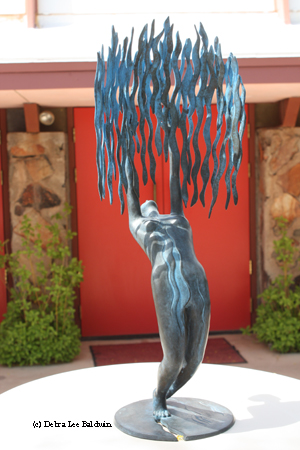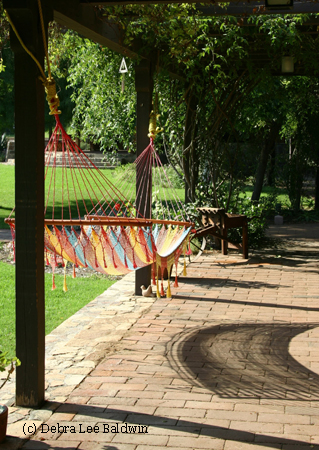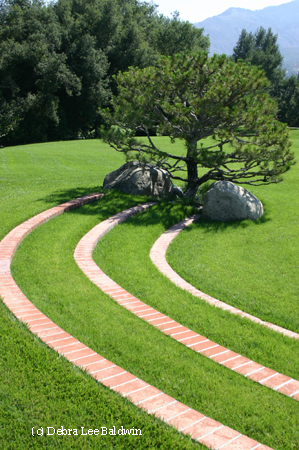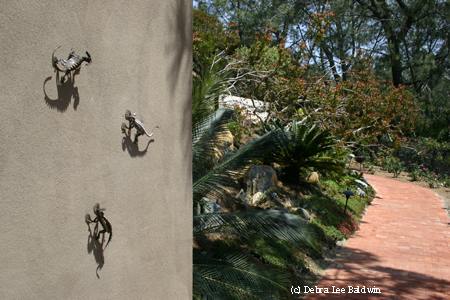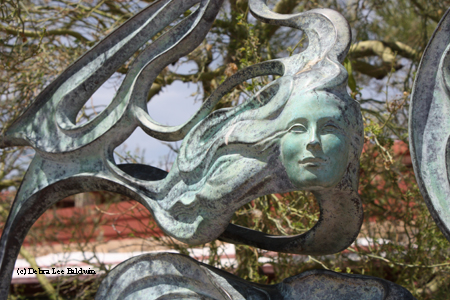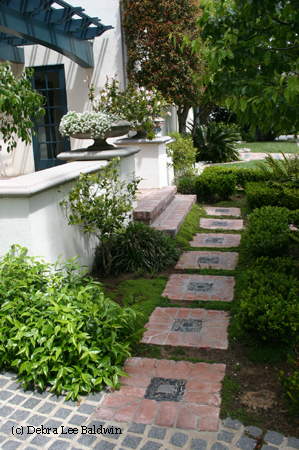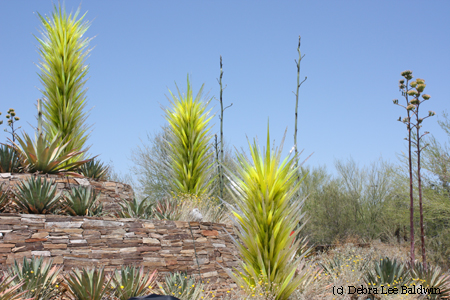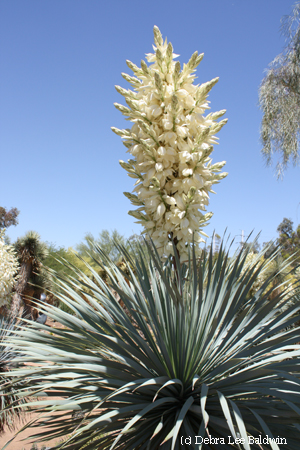This is the gist of my 2/12/11 presention at the San Diego Botanic Garden. What defines “art” is subjective, and its forms are infinitely variable. But in general, when positioning a delicate sculpture in your garden, silhouette it against a solid surface or the sky. Otherwise, the piece may disappear. (Photo taken at Taliesin West, near Phoenix.)
Substantial art objects are even more dramatic with the right backdrop. This photo—from my book, Designing with Succulents—is really about the agaves. Don’t you love the way they burst from behind St. Francis like green flames?
So, you don’t want a statue of St. Francis in your garden? He is a bit of a cliche, ha. Which brings me to a crucial concept: Love the art you DO choose. For example, I adore (and wish I owned) this sculpture by Mexican artist Jose Ignacio Castaneda. Photo taken at Rancho La Puerta fitness spa, Baja California.
The piece needn’t be elaborate or expensive, but it should delight your soul. I couldn’t stop gazing at this hammock, also at Rancho La Puerta. Not only does it encapsulate a delicious invitation, it captivates with color, lines and shadows. Look at the way it partners with light! Its shadow alone is garden art.
Ideally, sight lines lead the eye to the art. This really IS someone’s back yard. There’s a golf course beyond the lawn, so the view benefits from borrowed landscaping. Brick steps sweep in a graceful arc that ends in a tree that resembles a bonsai. The pine’s shadow, which moves slowly with the sun, subtly enhances the tableau.
Whimsical art is delightful, but if it’s too cute or kitschy, you’ll tire of it soon. These life-sized metal sculptures of desert horned lizards do it right, and don’t you love the shadows they cast on the stucco wall?
This is “Wind” by Frank Lloyd Wright, another sculpture at Taliesin West. It doesn’t move, unlike art that is wind-driven. No photo can do a kinetic sculpture justice; it has to be seen to be appreciated. Artist Anthony Howe’s “Rooster Rings is one outstanding example. Smaller, more affordable pieces often can be found at garden centers. Or Google “wind art”.
Garden art can be functional, too, and even solve problems. Here, the designer/homeowner’s challenge was to create a path that “worked” with both the driveway and the home’s front steps. The solution is texturally intriguing and inviting to visitors: Squares that combine elements of both materials, visually uniting them. What makes this art is how each paver incorporates a pebble mosaic, and how the first paver extends into the driveway.
If you’re good with handicrafts, create your own outdoor art. Here’s a simple yet effective idea that combines whimsy, color, texture and light: a brick topped with a mosaic of glass.
Speaking of glass, artist Dale Chihuly did a famous installation at the Desert Botanical Garden in Phoenix. Pieces interpreted and resembled plants in the garden. I don’t know about you, but I’d be a little nervous having towers of blown glass in my garden. Not much likelihood of that, though. Can you imagine what even one Chihuly sculpture must cost?
But here’s something I can afford: a kinetic sculpture with texture, drama and personality; that looks fabulous silhouetted against the sky; and that makes a statement about my own gardening aesthetic. Now, to find the perfect place for it…

